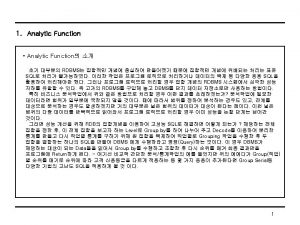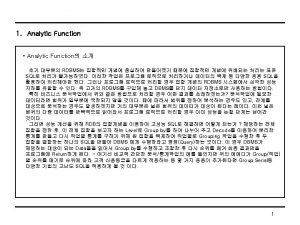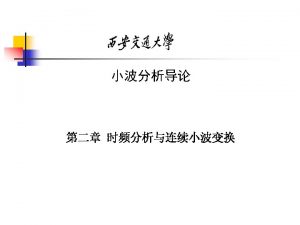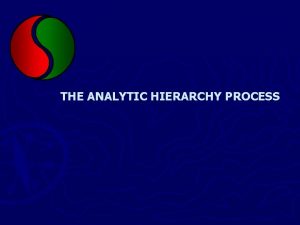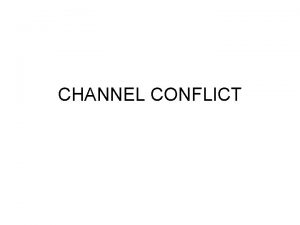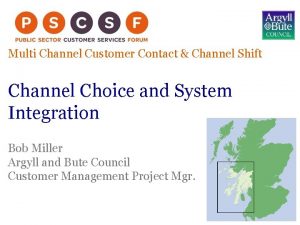Analytic Framework for Channel Design and Implementation Chapter










- Slides: 10

Analytic Framework for Channel Design and Implementation Chapter 2 with Duane Weaver

OUTLINE l l l l DESIGN: Segmentation Positioning Targeting Establish New or Refine Existing IMPLEMENTATION: Identify Power Sources IMPLEMENTATION: Identify Channel Conflicts IMPLEMENTATION: Goal of Channel Coordination

DESIGN: Segmentation l Splitting the market into groups of end-users who are: 1. 2. l maximally similar within each group and maximally different between groups The relevance of segmentation to marketing channel management relates to the development and provision of service outputs. Table 2. 1 on p. 32 demonstrates a the reality of a segmented channel. l Get into your teams and answer the following: Provide one example (existing company’s product or service) that uses at least two different channel distribution approaches to facilitate significantly different needs of two market segments. Describe how these approaches changes the value structure of the original product.

DESIGN: Positioning l Occurs when the channel manager defines the optimal channel to serve the needs of end-users as segmented by their service output demands. l In your teams: 1. As a channel manger for a new fragrance (Febreeze), describe how you would determine the segmentation based end-user service output demands? 2. How would you define what is the optimal channel structure, intensity, ABC)? Provide a couple of specific examples to demonstrate your ideas. (flows,

DESIGN: Targeting l At this stage of analysis it becomes important to not only determine what segments to target, but which segments to ignore. (e. g. internal managerial bounds (like? ), external environmental and competitive bounds (like? )) l Why ignore? Specific examples?

DESIGN: Establish New or Refine Existing l When preexisting channels are in place in the market, it is important to perform a gap analysis. If a new channel is being formed, the goal is to strive for zero-based. l Gap Analysis = Δ of zero-based vs. actual channels on the demand supply side.

IMPLEMENTATION: Identify Power Sources The role of the channel manager is to continuously and dynamically manage channel initiatives and relationships via realms of influence over channel power. Listen well, understand, relate: Get to know the needs of each channel member/segment and the relevant nuances of their interdependent relationships. (mentally walk a mile in their shoes)

IMPLEMENTATION: Identify Channel Conflicts l When one channel member’s actions prevents the channel from achieving its goals: Goal conflict (e. g. ? ) l Domain conflict (e. g. ? ) l Perceptual conflict (e. g. ? ) l

IMPLEMENTATION: Goal of Channel Coordination l A channel is coordinated when: disparate channel members are brought together to advance the goals of a channel in harmony in spite of their independent and likely conflicting goals. l This is the ultimate goal of channel management

THANK YOU!
 Channel design and implementation
Channel design and implementation Chapter 9 conic sections and analytic geometry
Chapter 9 conic sections and analytic geometry Chapter 9 conic sections and analytic geometry
Chapter 9 conic sections and analytic geometry Scoring rubrics for designing a museum exhibit
Scoring rubrics for designing a museum exhibit Single channel multichannel omnichannel
Single channel multichannel omnichannel Signal space analysis in digital communication
Signal space analysis in digital communication Jfet self bias configuration
Jfet self bias configuration Chapter 9 topics in analytic geometry
Chapter 9 topics in analytic geometry Analytic trigonometry
Analytic trigonometry Pcfio
Pcfio Network design and implementation
Network design and implementation











